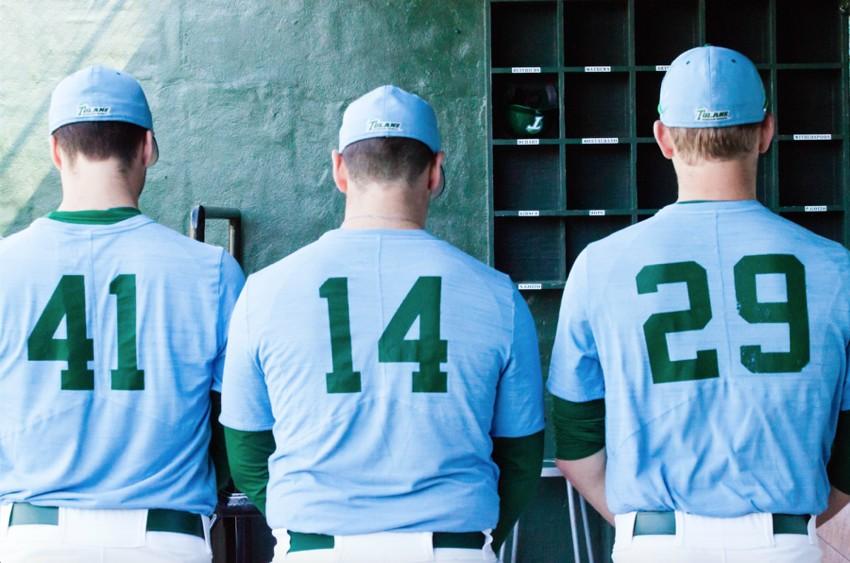Green Wave pitchers wind up for challenges, pressures of college play
There are 60 feet and six inches which separate the pitcher from the plate. That distance separates the opponent from the challenger. A win from a loss.
Tulane baseball features 33 men on its roster, 17 of which are pitchers.
While baseball has gotten off to a 4-12 start under new head coach Travis Jewett, the pitching roster has continued to build throughout the year. Six of the 11 newest additions to the Green Wave have the opportunity to stand on the mound this season.
Being a pitcher brings its own set of pressures, as redshirt senior Christian Colletti said. These pressures only increase when pitchers enter the world of NCAA sports.
“… Everything is a lot more competitive,” Colletti said. “Everything’s on the line all the time. It is just college baseball … You’re competing with the best kids that you played with in high school.”
Freshman Chase Solesky, who has pitched more than 17 innings in five games this season, said he felt pressure in the beginning of the year, but it has since gotten easier with the season in full swing.
“Now, the pressure … it doesn’t matter,” Solesky said. “It’s played the same everywhere. It’s baseball.”
Solesky currently leads all pitchers with a 2.04 ERA and .238 opponent batting average in his five appearances so far. His ERA and opponent batting average lead veteran players such as senior Corey Merrill and redshirt junior J.P. France.
“[Solesky] has been doing really well,” Colletti said. “He’s really stepped up as a freshman. He’s been our midweek starter, and he’s been throwing really well.”
When on the mound, pitchers can control the event: a good performance can save a game, but a bad performance can kill leads and momentum.
On the other hand, as France states, each new game presents an opportunity to face an entirely different opponent. Even when facing the same lineup, the mindset of the hitter will always adapt with each new time at bat. As a result, a pitcher will never truly face the same opponent twice.
“The lineup you face Friday won’t necessarily be the same line-up you face Saturday, even if the order of the hitters are still the same,” France said. “Those hitters can be seeing the ball differently and can be feeling good that game. Every single game is completely different from the last.”
Colletti and Solesky both share this opinion. Colletti, a transfer from UConn, was especially interested in the varied hitting styles that range from school to school.
“I think the most interesting thing about pitching with different teams is, from the west coast to the east coast, I think every team, hitting-wise, has a different approach to hitting,” Colletti said. “Trying to adjust to each team to get the most outs is one of the most challenging things.”
As baseball enters the rest of its season, its pitchers will be preparing to oust any opponent. Teams such as LSU and University of New Orleans will be difficult games, but as France said, the pitcher is the one who conducts the game until the ball is thrown.
“The game can’t start until the pitch is thrown,” France said. “The pitcher’s in control of the pace of the game … Until that ball is released, the pitcher controls everything.”
Your donation will support the student journalists of Tulane University. Your contribution will allow us to purchase equipment and cover our annual website hosting costs.



